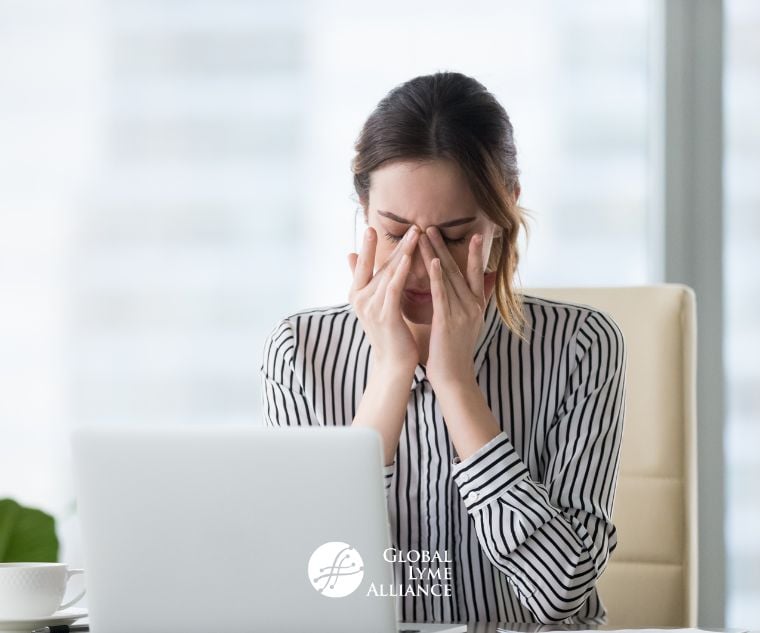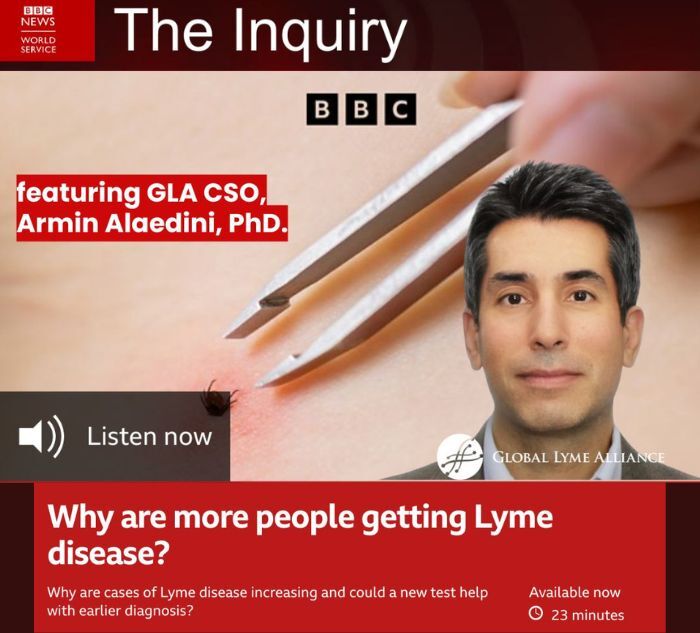
Those with Lyme disease have to fight against symptoms of fatigue, especially after strenuous activity.
One of the hardest parts of being sick with Lyme disease, babesiosis, ehrlichiosis, and chronic Epstein-Barr virus was losing my ability to be active. A skier and former camp counselor, I loved the endorphin rush of a good workout or a jam-packed day. I was not one for stopping, or even resting.
When I got sick, my active lifestyle came to a grinding halt. I lay in bed watching my muscles dwindle, worrying about words like atrophy and entropy. Due to neurological symptoms, I struggled to even do quiet activities like read or watch TV. In today’s busy world, doing nothing, being completely still, might seem like a nice reprieve, but for me and so many previously active patients, forced rest is downright depressing. In fact, many Lyme patients suffer from anxiety and depression as a result of illness.
As soon as my treatment kicked in and I started to feel a little better, I wanted to rush right out and do all the things I couldn’t do when I was bedridden. This doesn’t mean I went straight to the top of a mountain, but I was excited just to have lunch with a friend, write a poem, or even drive myself to the pharmacy. I was so excited that sometimes, I’d try to do two of those activities in one day.
And then I’d crash.
My doctor explained to me that this is a completely normal, albeit incredibly frustrating, experience that many Lyme patients face. We get a little bit of energy, we rush out and spend it, and then we fall back into an energy deficit. In his book How Can I Get Better? An Action Plan for Treatment Resistant Lyme & Chronic Disease, Richard I. Horowitz, MD says that patients often tell him “as they begin to feel better and have good days, they tend to overdo the exercise and then crash, ending up in bed for days.”[i]
There’s actually a term for this phenomenon: post-exertional malaise (PEM). In Myalgic Encephalitis/Chronic Fatigue Syndrome (ME/CFS) patients, post-exertional malaise is defined by the CDC as “the worsening of symptoms following even minor physical or mental exertion, with symptoms typically worsening 12-48 hours after activity and lasting for days or even weeks.”[ii]
PEM is now also being observed in long COVID patients.
No matter the illness causing PEM, it’s aggravating and discouraging to feel like you’re taking two steps forward and one step back—or even one step forward and two steps back.
These days, I experience PEM far less often. I rebound faster after more activity (I recently skied two mornings in a row!). Part of this improvement is because, after years of treatment and tweaking my protocol, my body isn’t using so much energy to fight infection. Part of it is because I’ve incorporated adjunct therapies to help support my healing. But making steady gains can mostly be attributed to some tricks I’ve learned to avoid crashing:
-
Pace yourself: Don’t go rushing out to do everything at once. Think about doing one mental or physical activity one day, resting afterwards, and seeing how you feel the next day before doing something else. Start small and figure out your own limits.
-
Stop while you’re ahead: Even if you still have energy, the idea of pacing is to stop activity before you get tired. This might mean walking one loop around the block when you think you could do two. It might mean reading one paragraph when you think you could read one page.
-
Rest even when you have energy: A doctor once told me to think about “savings, not credit card spending.” If you have a little bit of energy, of course you want to go do something, because who knows how long that energy will last. But the more you can conserve energy, the more you’ll be able to build up some reserves.
-
Remember that limits and capabilities will change: Your current limits—say, reading one paragraph—will probably improve over time. The pacing you do now will help you be able to do more in the future.
-
Remember that a setback is not a full crash: While you’re trying to avoid the “crash and burn” of PEM, you still may have flareups, Herxheimer reactions, or just generally bad days. This doesn’t mean that you’ve lost ground. It just means you need to listen to your body and give it the rest it needs so you can regain forward momentum.
-
Work with a physical therapist: If you’re trying to get back to a physically active lifestyle, work with a physical therapist—preferably one who is Lyme literate!—who can help you with a graded exercise program and who won’t push you beyond your capabilities. When I first started physical therapy, some days I could only ride 30 seconds on a stationary bike. Sometimes I’d get up to 1:30, then crash, and then have to start over at 30 seconds. Work with someone who can help you work your way up slowly.
-
Explore other causes of fatigue: Your tick-borne illnesses are real and are causing your symptoms. But it’s important to find out if there are additional health factors at play, like impaired adrenal or thyroid function; make sure your doctor is checking you for all factors.
-
Take a holistic approach to your health: Make sure you are supporting your body’s healing by establishing good sleep hygiene, eating well (consider the Lyme Disease Diet), minimizing stress, and taking care of your mental health.
References:
[i] Horowitz, Richard I., MD. How Can I Get Better? An Action Plan for Treatment Resistant Lyme & Chronic Disease. New York: St. Martin’s Press, 2017 (369).
[ii] https://www.cdc.gov/me-cfs/healthcare-providers/clinical-care-patients-mecfs/treating-most-disruptive-symptoms.html#:~:text=Post%2Dexertional%20malaise%20(PEM)%20is%20the%20worsening%20of%20symptoms,by%20activity%20management%20(pacing).
Click the link below to sign up for GLA's newsletter.
The above material is provided for information purposes only. The material (a) is not nor should be considered, or used as a substitute for, medical advice, diagnosis, or treatment, nor (b) does it necessarily represent endorsement by or an official position of Global Lyme Alliance, Inc. or any of its directors, officers, advisors or volunteers. Advice on the testing, treatment or care of an individual patient should be obtained through consultation with a physician who has examined that patient or is familiar with that patient’s medical history.

Jennifer Crystal
Writer
Opinions expressed by contributors are their own. Jennifer Crystal is a writer and educator in Boston. Her work has appeared in local and national publications including Harvard Health Publishing and The Boston Globe. As a GLA columnist for over six years, her work on GLA.org has received mention in publications such as The New Yorker, weatherchannel.com, CQ Researcher, and ProHealth.com. Jennifer is a patient advocate who has dealt with chronic illness, including Lyme and other tick-borne infections. Her memoir, One Tick Stopped the Clock, was published by Legacy Book Press in 2024. Ten percent of proceeds from the book will go to Global Lyme Alliance. Contact her via email below.







